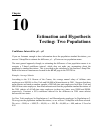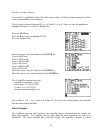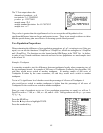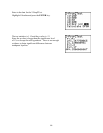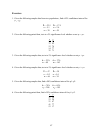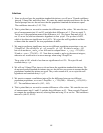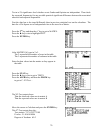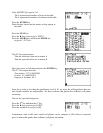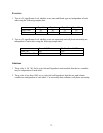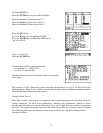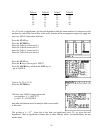
Chapter
11
Chi-Square Tests
Contingency Tables
When you are measuring the relationship between two categorical variables, one of the most
important tools for analyzing the results is a two-way frequency table. We can use the table to
see if the variables are independent by comparing observed frequencies with the frequencies that
would be expected from such a sample if they were independent.
A Chi-Square (Χ
2
) test-statistic can be computed from the observed and expected frequencies.
There are two common Chi-Square tests; the Test of Independence and the Goodness-of-Fit test.
The function Χ
2
-Test is used for the Test of Independence and is located on the STAT page in
the Tests list. The Χ
2
-Test function works differently than the other tests on this menu. It
requires you to enter the observed frequencies into a matrix. The computed expected frequencies
are then stored automatically in another matrix.
The TI-83, TI-83 Plus, and the older models of the TI-84 Plus calculators will not perform the
Chi-Square Goodness-of-Fit test. More recently-manufactured TI-84 Plus calculators have a
X
2
GOF-Test function on the STAT page and in the TESTS list. It requires you to insert the
observed frequencies into L1 and the expected frequencies into L2 before you use the X
2
GOF-
TEST function.
Example: School Discipline
Violence and lack of discipline have become major problems in schools in the United States. A
random sample of 300 adults was selected and asked if they favor giving more freedom to
schoolteachers to punish students for violence and lack of discipline. The two-way classifications
of the responses of the adults is presented in the following table.
In Favor Against No Opinion
Men 93 70 12
Women 87 32 6
69



